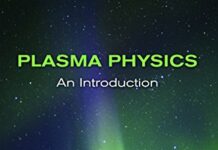
Ebook Info
- Published: 2012
- Number of pages: 276 pages
- Format: PDF
- File Size: 33.36 MB
- Authors: Richard Fitzpatrick
Description
This accessible text on classical celestial mechanics, the principles governing the motions of bodies in the Solar System, provides a clear and concise treatment of virtually all of the major features of solar system dynamics. Building on advanced topics in classical mechanics such as rigid body rotation, Langrangian mechanics and orbital perturbation theory, this text has been written for advanced undergraduates and beginning graduate students in astronomy, physics, mathematics and related fields. Specific topics covered include Keplerian orbits, the perihelion precession of the planets, tidal interactions between the Earth, Moon and Sun, the Roche radius, the stability of Lagrange points in the three-body problem and lunar motion. More than 100 exercises allow students to gauge their understanding and a solutions manual is available to instructors. Suitable for a first course in celestial mechanics, this text is the ideal bridge to higher level treatments.
User’s Reviews
Reviews from Amazon users which were colected at the time this book was published on the website:
⭐Celestial Mech is a hard subject but this book certainly makes it interesting! The treatment is modern and needs knowledge of calculus at least at 3rd-year level. But the pleasure of making the journey is worthwhile
⭐Lacking explanation and details in derivation. Had to consult other books to get all the vital information for my course where this was the required text.
⭐excellent i recommend to all
⭐* PhysicalThe book is very well bound on good quality paper with the great size of the text.* Target audience, H.N.D, Undergraduate, postgraduate, Masters?Believe me or not, this final year topic can be explored using superposition of mathematical topics that are covered in second-year mathematics at a component level and some knowledge of tensors.* What does this book cover?This book covers Newtonian Mechanics, Newtonian Gravity, Keplerian Orbits, Orbits in Central Force Fields, Rotating Reference Frames, Lagrangian Mechanics, Ridgid Body Rotation, Three Body Problem, Secular Perturbation Theory, Lunar Motion, Appendix a.1…A11, Appendix B.1 … B.6, Appendix C.1 … C.6And build these up to form a newer bigger topic picture. If you believe math difficulty by the sheer size of the formulae then some pages are difficult, with formulae over four lines of symbolic notation. But if you can break down these equations into their component forms and if you can read Greek symbolic lettering and the operations they represent, you will be refreshed in how good it is? This book is helpful in many ways to grasp what’s going on. Some of the later parts of the book are difficult in their own way I admit, but most of this book is great (i.m.h.o)* SummaryThis is a delightful exploration of a topic I have been interested in but never read much about until now. What made me curious was the launch of both Voyager 1 and 2 probes in 1977, for what was to be known as the ‘Grand Tour’. This optimal path around the solar system using gravitational slingshots that would save years of the travel times. This being based on a student PhD Mathematical thesis, by Gary Flandro, who used a mainframe and applied the problem with FORTRAN language to calculate the parameters. This introduction to Celestial Mechanics book is really helpful and stimulating to read.
Keywords
Free Download An Introduction to Celestial Mechanics 1st Edition in PDF format
An Introduction to Celestial Mechanics 1st Edition PDF Free Download
Download An Introduction to Celestial Mechanics 1st Edition 2012 PDF Free
An Introduction to Celestial Mechanics 1st Edition 2012 PDF Free Download
Download An Introduction to Celestial Mechanics 1st Edition PDF
Free Download Ebook An Introduction to Celestial Mechanics 1st Edition


